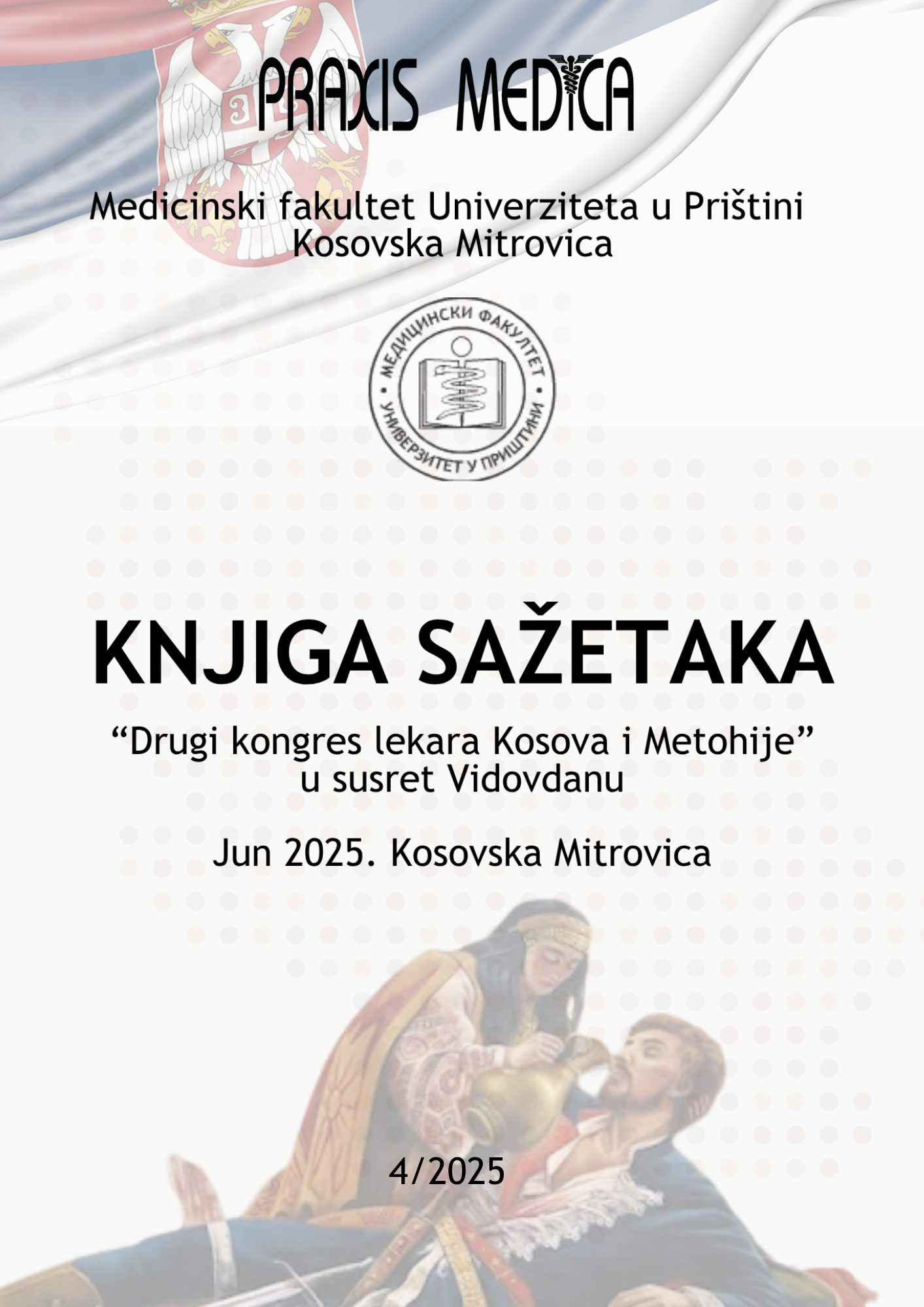Current issue

Volume 53, Issue 4, 2025
Online ISSN: 2560-3310
ISSN: 0350-8773
Volume 53 , Issue 4, (2025)
Published: 30.06.2025.
Open Access
All issues
Contents
30.06.2025.
Professional paper
DIGITALNI PROTOKOL U IZRADI FIKSNIH PROTETSKIH NADOKNADA
Uvod: Digitalna tehnologija je preuzela primat u stomatološkoj praksi I omogućila brže, efikasnije, preciznije I kvalitetnije stomatološke usluge I na
taj način veoma uticala na celokupnu stomatološku profesiju. Osim poboljšanja kvaliteta oralnog zdravlja, povećava produktivnost i ekonomičnost
stomatoloških usluga i pruža bolje iskustvo pacijenatima. Za današnje i buduće studente stomatologije,digitalizovana stomatologija će biti polazna
tačka u učenju i usavršavanju svog znanja.O konvencionalnoj stomatologiji biće reči kao osvrt na prošlost i kako se nekada radilo.
Cilj: Cilj ovog predavanja je ukazati na prednosti kompletno digitalnog postupka izrade fiksnih protetskih nadoknada.
Metodologija: Postupak protetske rehabilitacije obuhvata dobijanje adekvatnih klinickih digitalnih fotografija, njihova upotreba u profesionalnom
programu za dizajn protetskih nadoknada, spektrofotometriju tj. odredjivanje boje susednih zuba, digitalni otisak preparisanih zuba, prenošenje
položaja gornje vilice u digitalni articulator, snimanje pokreta donje vilice, proba privremenih kruna dobijenih 3D stampom i izrada definitivnih
fiksnih nadoknada.
Zaključak: Digitalni protokol u restaurativnoj stomatologiji doveo je do unapredjenja efikasnosti, kvaliteta i predvidivosti protetske terapije.
Ključne reci: Digitalna tehnologija, Digitalni protokol, protetska rehabilitacija
Radivoje Radosavljević, Milan Ćalić
01.12.2019.
Professional paper
Bruxism
Bruxism is a parafunctional activity of the masticatory system, which is characterized by clenching or scraping of teeth. This condition is often accompanied by a change in the shape and size of the teeth, as well as the function of the stomatognathic system. Bruxism can occur during sleep and in the waking state. The etiology is multifactorial and all causes can be divided into peripheral and central. The clinical signs and symptoms of bruxism are primarily characterized by temporomandibular disorders, the appearance of bruxofacets and changes in the hard dental tissues, supporting apparatus of the teeth and masticatory muscles, as well as headaches. The diagnosis of bruxism is made on the basis of anamnesis and clinical signs and symptoms, while electromyography and polysomnographic analysis are used in scientific researches. Therapy is aimed at controlling etiological factors and reducing symptoms. Occlusal splints are the most commonly used in the treatment of bruxism. Medications are used in situations when other methods, including psychotherapy, do not give positive results. Given the multifactorial etiology, the therapeutic approach must be multidisciplinary. The approach to the patient must be individual in order to treat as effectively as possible.
Nadica Đorđević, Jelena Todić, Dragoslav Lazić, Meliha Šehalić, Ankica Mitić, Radivoje Radosavljević, Aleksandar Đorđević, Ljiljana Šubarić
01.01.2016.
Professional paper
Orofacial features of subjects aged 18-30 years in the northern part of Kosovo and Metohija territory
Introduction: Temporomandibular disorder (TMD) is a universal term referred to herein to collectively denote a series of functional disorders of orofacial structures, the temporomandibular joint (TMJ) and the masticatory muscles in particular. Objectives: The aim of our study was to determine the prevalence of temporomandibular disorders within the observed sample population of the northern part of Kosovo and Metohija, as well as the frequency of signs and symptoms of this type of disorder. Methods: The study involved a sample of 300 subjects, aged 18-30 years. The sample comprised the target student population attending the University of Pristina, Kosovska Mitrovica. A random sample, intended for sampling without replacement, was drawn from the target population. All subjects underwent the Helkimo clinical dysfunction index analysis. Results of the analysis were quantified and expressed numerically, based on severity, as the Helkimo anamnestic dysfunction index (Ai) and the clinical dysfunction index (Di) with specific values assigned thereto accordingly. Results: The prevalence of temporomandibular disorders within the observed sample population totaled 50.7% (Di> 0). In the majority of patients a mild form of TMP (67%) was reported. Temporomandibular disorders were more common in women than in men, who appear to be three times as likely to develop the respective condition, demonstrating the ratio of 3:1. The most common TMD signs and symptoms implied mandibular kinetics disturbances (46%) and TMJ sounds (45%). The prevalence of pain during mandibular movements amounted to 9%, the palpable TMJ sensitivity to 20% and the palpable sensitivity of masticatory muscles 18%. Headache and otalgia were represented with 13%, that is, 3% in the observed sample. Conclusion: Temporomandibular disorder analysis demonstrates high incidence in the population of the northern part of Kosovo and Metohija. These findings indicate the need for an extensive prevention, control and treatment of this type of disorder.
Jelena Todić, Ankica Mitić, Dragoslav Lazić, Radivoje Radosavljević, Miloš Staletović, Nadica Đorđević, Radovan Jovanović





